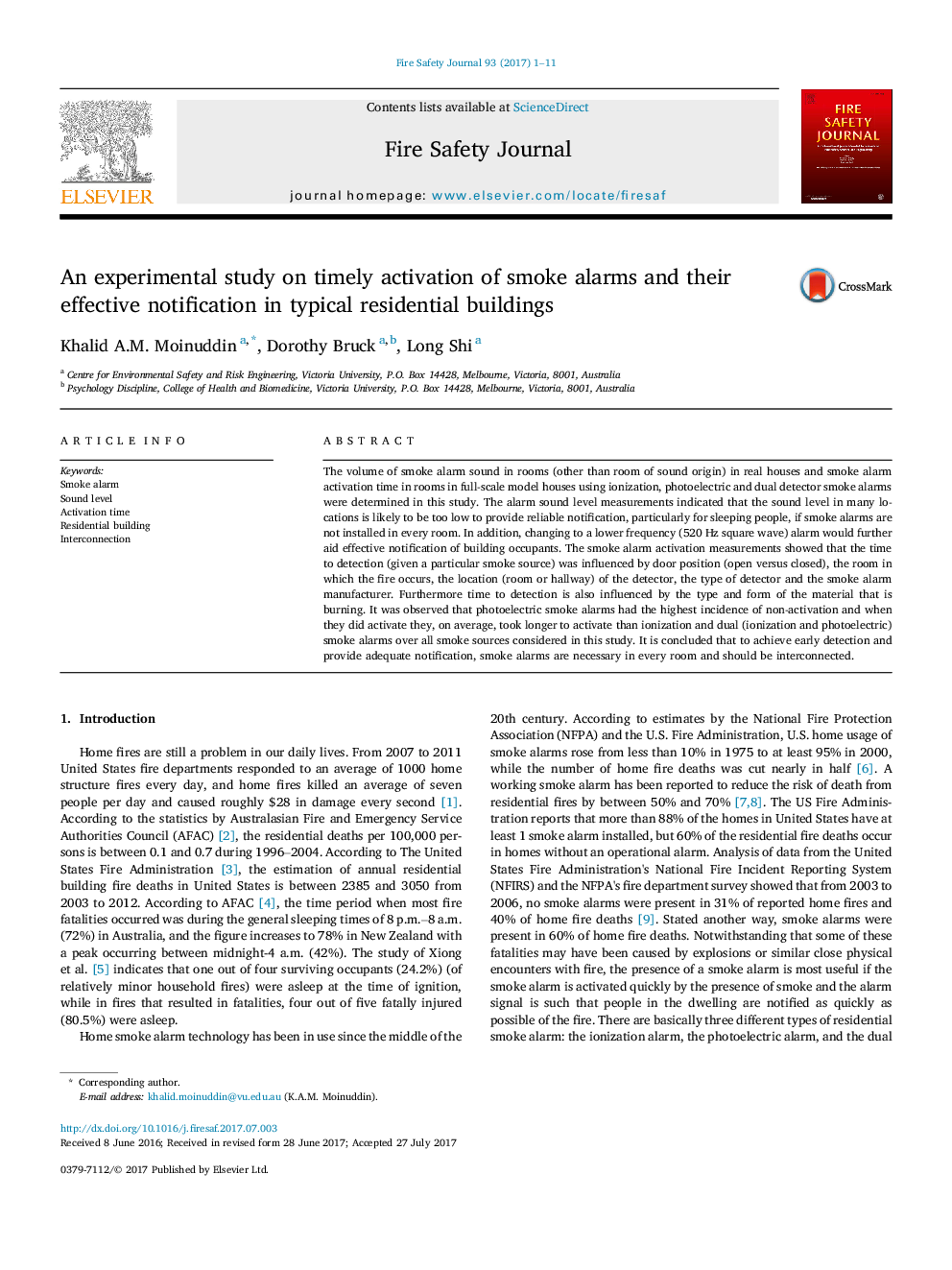| کد مقاله | کد نشریه | سال انتشار | مقاله انگلیسی | نسخه تمام متن |
|---|---|---|---|---|
| 4920816 | 1429210 | 2017 | 11 صفحه PDF | دانلود رایگان |
عنوان انگلیسی مقاله ISI
An experimental study on timely activation of smoke alarms and their effective notification in typical residential buildings
ترجمه فارسی عنوان
یک مطالعه تجربی در مورد به موقع فعال کردن آلارم دود و اطلاع رسانی موثر آنها در ساختمان های معمولی مسکونی
دانلود مقاله + سفارش ترجمه
دانلود مقاله ISI انگلیسی
رایگان برای ایرانیان
کلمات کلیدی
زنگ دود، میزان صدا، زمان فعال سازی، ساختمان مسکونی، اتصال
موضوعات مرتبط
مهندسی و علوم پایه
سایر رشته های مهندسی
مهندسی عمران و سازه
چکیده انگلیسی
The volume of smoke alarm sound in rooms (other than room of sound origin) in real houses and smoke alarm activation time in rooms in full-scale model houses using ionization, photoelectric and dual detector smoke alarms were determined in this study. The alarm sound level measurements indicated that the sound level in many locations is likely to be too low to provide reliable notification, particularly for sleeping people, if smoke alarms are not installed in every room. In addition, changing to a lower frequency (520Â Hz square wave) alarm would further aid effective notification of building occupants. The smoke alarm activation measurements showed that the time to detection (given a particular smoke source) was influenced by door position (open versus closed), the room in which the fire occurs, the location (room or hallway) of the detector, the type of detector and the smoke alarm manufacturer. Furthermore time to detection is also influenced by the type and form of the material that is burning. It was observed that photoelectric smoke alarms had the highest incidence of non-activation and when they did activate they, on average, took longer to activate than ionization and dual (ionization and photoelectric) smoke alarms over all smoke sources considered in this study. It is concluded that to achieve early detection and provide adequate notification, smoke alarms are necessary in every room and should be interconnected.
ناشر
Database: Elsevier - ScienceDirect (ساینس دایرکت)
Journal: Fire Safety Journal - Volume 93, October 2017, Pages 1-11
Journal: Fire Safety Journal - Volume 93, October 2017, Pages 1-11
نویسندگان
Khalid A.M. Moinuddin, Dorothy Bruck, Long Shi,
